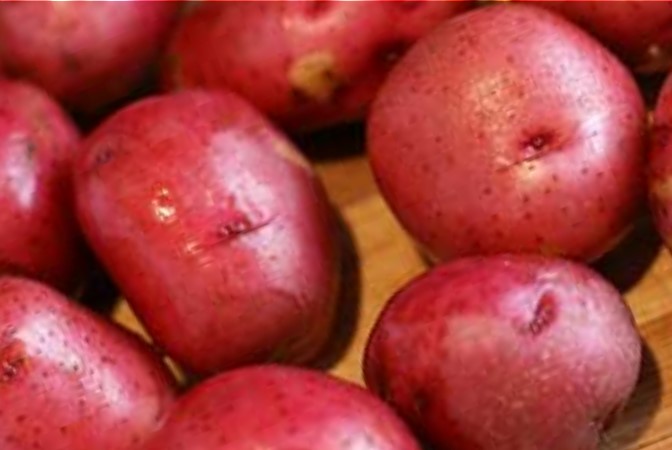
PRESQUE ISLE, Maine — Maine potato industry officials are watching action at the federal level now that information technologies and data is increasingly being used in the agriculture industry, which both growers and legislators say will continue to influence the future of farming.
In Washington, D.C., last month, the House Agriculture Subcommittee on General Farm Commodities and Risk Management held a hearing to both examine technology’s role in farming and to hear from witnesses about the opportunities and challenges related to investments in new technology for production agriculture.
Don Flannery, executive director of the Maine Potato Board, said last week that a number of Maine growers are increasingly employing technology on their farms in order to achieve maximum crop production. Such data-gathering equipment ranges from harvesters and combines to water sensors and soil monitors.

A potato truck sits before a healthy crop in Littleton in this 2014 file photo. Maine potato industry officials are watching action at the federal level now that information technologies and data is increasingly being used in the agriculture industry, which both growers and legislators say will continue to influence the future of farming.
(JEN LYNDS)
In his opening statement, U.S. Rep. Rick Crawford, R-AK, subcommittee chairman, noted that not only was technology influencing planting decisions and optimizing yields, it also gives farmers the tools to “more accurately assess soil health and water usage, and it’s even cutting down on labor costs.
“Farmers are also quickly learning that smart investments in new technology will not only make them more efficient, but will also conserve resources and ensure their land will remain productive for generations to come,” he continued.
At the same time, both Crawford and Flannery said that there are “challenges” to overcome when using such technology, which was a significant focus of the subcommittee hearing. Crawford noted that there is uncertainty around the advancements on the legal and regulatory landscape, and that growers are “justifiably concerned about the privacy and security of their data while questions loom over data ownership.”
Flannery said that on a local level, growers are acknowledging issues around the sharing of data and technology. For example, he noted, there are times when growers have purchased a certain brand or model of farm equipment, such as a harvester, that comes with technology invented or patented by the manufacturer.
“It mostly involves around who owns the technology, how much do they own and could or should it be shared,” said Flannery. “Since some of this technology is owned by the manufacturers and only runs on certain equipment, there are instances when a grower has to get it fixed by the manufacturer and can’t go to a local mechanic for help. It is similar to when you buy a new automobile and you sometimes can only go to the franchise to get it fixed with their equipment.”
Todd J. Janzen, the president and attorney of Janzen Agricultural Law in Indianapolis, Indiana, told the committee that a survey of 400 farmers conducted by the American Farm Bureau last year found that 77 percent of farmers expressed concern about which entities can access their farm data after it has been uploaded to cloud-based servers. The same percentage said they worried whether uploading the data could cause it to be used for regulatory purposes. Another 59 percent said they were confused about whether current legal arguments allowed agriculture technology providers to use their agriculture data to market other services or equipment back to them.
Sixty-seven percent of respondents said that they consider how outside parties will use their agricultural data before deciding whether to upload it to an agriculture technology provider.







